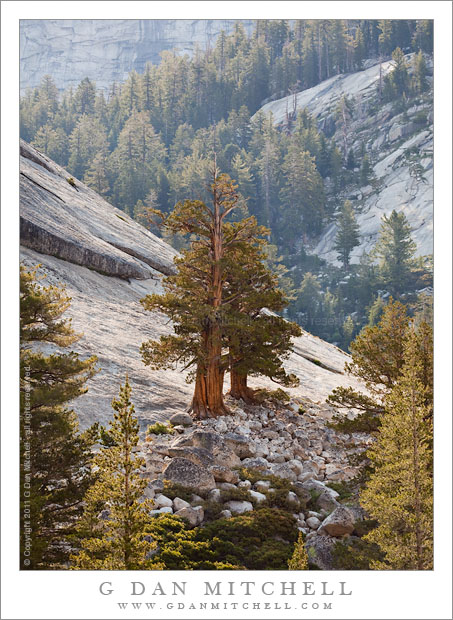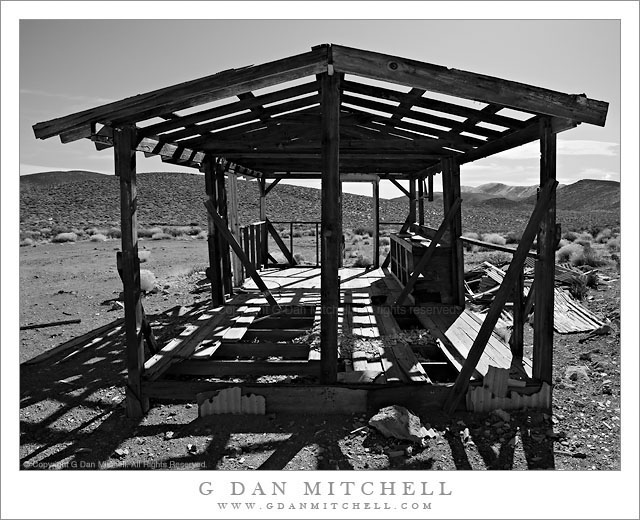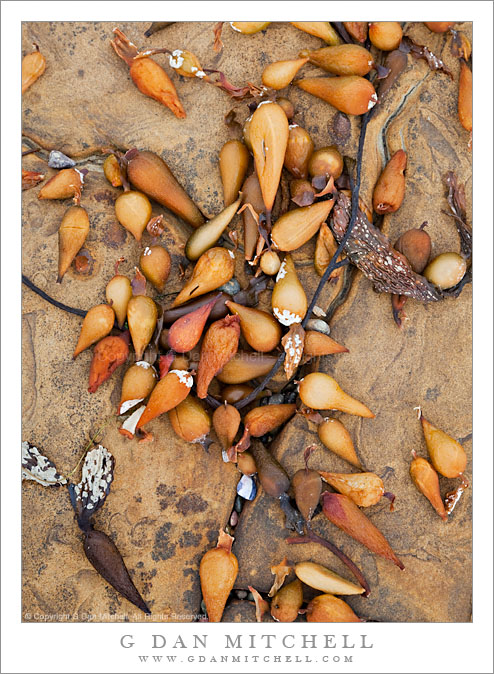Juniper Trees and Granite Slab, Morning. Yosemite National Park, California. July 27, 2011. © Copyright 2011 G Dan Mitchell – all rights reserved.
Two juniper trees in morning light at the base of Pywiack Dome, Yosemite National Park.
This strong and straight juniper and the smaller twin hiding behind it grow at the top of the rocky debris field at the base of this dome not far from Tenaya Lake in the Yosemite National Park high country. A bit later than the “golden hour” time, the morning light begins to spill around the side of the dome and illuminate these trees from behind, creating a glow in their branches and the branches of trees and brush around them.
Last night someone asked me if I choose when to go to the Sierra to photograph based on the weather conditions. I wish I had that luxury! To some extent I make general decisions about where and what to shoot based on the season – The Valley around the end the start of November, the east side in early October, etc. – but for the most part I go where I can go when I can go there. However, I do alter the focus of my shooting based on the current conditions. This late-July trip is a good example.
I associate certain types of light with different seasons, and I tend to look for clear and crisp light in late July along, accented by snow fields and lots of new growth. I was a bit surprised by the amount of haze in the atmosphere. In fact, in some ways it almost reminded me of very late summer and early fall when Sierra wildfires often create a smokey haze over the range. With this in mind, I figured out that crystal clear photographs of mountain peaks against sky were not going to be in the cards. Instead I focused more on closer subjects, and when I shot more distant subjects I thought a lot about how to use the haze, embracing its effect rather than regretting that I had to deal with it. This photograph is perhaps an example of both of those approaches. The main subject here, the central pair of trees, cannot be more than a couple hundred feet away, if that. Behind the trees and the slab are more distant granite domes and cliffs and forest winding up the mountainside. Shooting almost straight into the sun accentuated the hazy quality of the more distant elements of the scene and enhanced the sense of front to back distance, and separated the foreground trees from the background it a way that would not have been possible in “better” lighting conditions.
G Dan Mitchell Photography
About | Flickr | Twitter | Facebook | Google+ | 500px.com | LinkedIn | Email
Text, photographs, and other media are © Copyright G Dan Mitchell (or others when indicated) and are not in the public domain and may not be used on websites, blogs, or in other media without advance permission from G Dan Mitchell.
(Basic EXIF data may be available by “mousing over” large images in posts. Leave a comment if you want to know more.)




